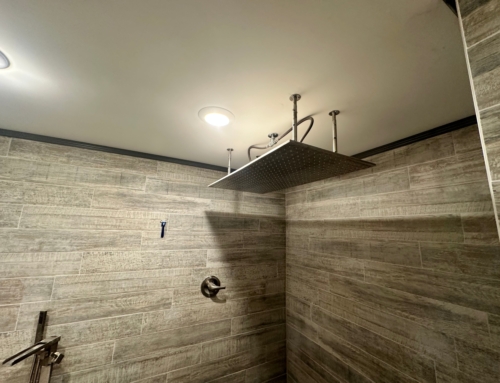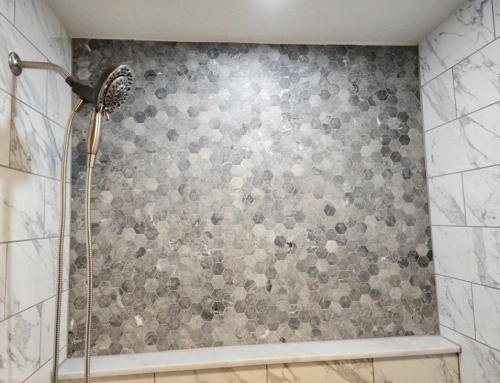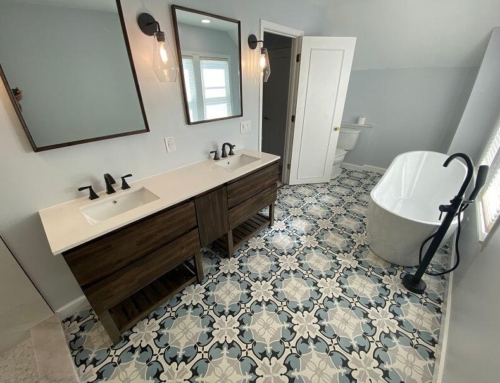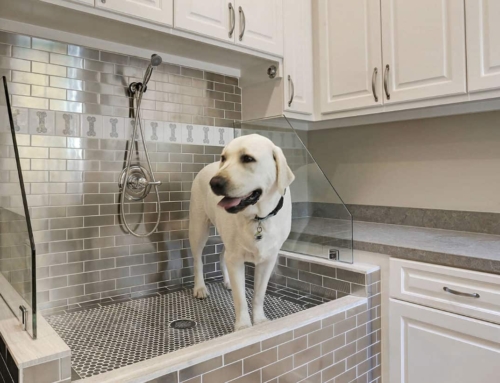There’s a new color in town, and it’s taking the world of interior design by storm—kind of literally. Imagine thunderclouds rolling in just before dusk, the setting sun casting a warm glow through their steely tufts. Quick—what do you call that color?
You’re right if you said greige, a hybrid hue that combines gray with beige to create a neutral tone that’s neither too stark—nor too boring—and has quickly become the default color for luxury apartments and bougie suburban homesteads alike.
You see, the problem with gray, just like a storm cloud, is it can be too cold. As a combination of white and black, gray is, by its very nature, colorless, and that can come across as a little… heartless. Beige solves that problem by blending yellow and/or brown hues into the mix, but the problem there is that beige has been so overused it hardly stands out at all.
For some, beige is to the color spectrum what vanilla is to the palate—sure there’s some flavor in there somewhere, but it’s still pretty bland.
Enter, greige, where the boldness of gray meets the warmth of beige, and the results are, well, stunning.
Like with most design trends, everything old is new again. Greige actually owes its genesis to fashion designer Giorgio Armani, who was dubbed “the king of greige“ back in the 1980s. It wasn’t, however, until 2015 or so that suddenly greige splashed across everyone’s walls and floors.
Shades of Greige
As with most colors, greige actually comprises a spectrum. Tones range from the almost-white to a moody battleship gray, but always with a yellowish/brownish undertone.
One classic color range that often gets confused with greige is taupe, however there are dramatic differences. While both rely on gray as a base color, it’s what they do with it that sets them apart. The -eige in greige is the result of yellow, amber or brown being mixed in, whereas taupe combines gray with reds, pinks and/or greens.
Choosing the best shade for your project is crucial. The choice you make determines the look and feel of your home and decides how well your walls match with other components in the house.
When choosing a shade, consider what kind of look you want. A lighter, beige-ier greige evokes an airy, playful look. A darker, grayer greige (with gray being dominant) casts a rich, deep and luxurious look over a room.
Also think about where you live. Weather and climate are big factors when choosing paint color. If you live in a cold area, going lighter—more on the beige side—will help offset the outdoor palate. The extra visual warmth helps counter the low temperatures and cloudy days. If you are blessed with sunshine for most of the year, even a dark almost-gray greige will do well as long as there is plenty of natural light coming in.
Finally, consider what colors are already present in your home. Choose a shade that blends well with the style you’ve already established. For instance, a light greige works really well with brown wood flooring, while dark greige blends well with tile. There are no rules on what colors you should match with each other; just make sure that your home will not feel like an awkward clash of styles.
How to ‘Do’ Greige
There’s really no right or wrong way to use greige. It complements a range of architectural styles, hues and spaces, from nurseries to living rooms. One way to bring some extra personality into your space is the use of pop color.
Adding stark color to a room via furniture, an accent chair, framed artwork, or even a pattern in a throw pillow that will stand out against the soft, neutral greige background breathes vibrancy into a neutral-toned space.
Another technique is to layer greige with other neutrals. Once you incorporate greige into a design scheme with other neutrals, the greige itself can really stand out. When you put different beiges and greiges together, you can start to see the undertones and personalities in the colors themselves. The simple act of layering neutrals adds depth to a room in a subtle way.
Finally, if you really want to take your design to the next level, the key is to apply texture. The more texture you use, the more depth you create in the room, and the more interest. Aim for a balance of shiny and matte textures. If your wall has a matte finish, for example, weave in a satin fabric or patterned throw pillow. On the other hand, if you have a wall with a sheen finish, incorporate a bit of velvet or a matte fabric to juxtapose that.
The Don’ts of Greige
Don’t select paint based on a color sample. It’s not enough to rely on a paint swatch to nail the right paint color for your home, especially when it comes to greige.Always test the paint in the actual space you’re working with, as the shade can take on a whole different hue once it’s on your wall.
Don’t look past lighting. Greige is a complicated color that changes under different lighting conditions. For instance, its undertones are enhanced in a room receiving an abundance of natural light, while cooler light will enhance its blue cast. View the color in a room at multiple times a day throughout the day and see how the hue looks when it’s sunny, cloudy, or even raining, before deciding whether it will work for your space.
Finally, don’t ignore your gut instinct.Colors are subjective. You know in your heart if you want a light color versus a dark color, a warm color that feels cozy and inviting or something that feels really fresh and contemporary. Choose what suits your design aesthetic—you know what you like, so go with what makes you happy.
If you’re still stuck on what shade of greige to use—or if that’s even the right color palette for your project—call the experts at Flooring Masters & Professional Remodelers for help. We stay on top of the latest trends and standards with continuing education and regular evaluations.
Call or email Flooring Masters & Professional Remodelers today for a free consultation. We know you only want the best in flooring. That’s why it’s important to hire the best in the business, and at Flooring Masters & Professional Remodelers, we can guarantee you that’s us.
Flooring Masters & Professional Remodelers have been flooring and remodeling Kentuckiana for over 30 years. Our certified installers have the ingenuity and know-how to assist you in choosing the perfect floors for your home. Don’t take matters into your own hands—let us guide your next project.











